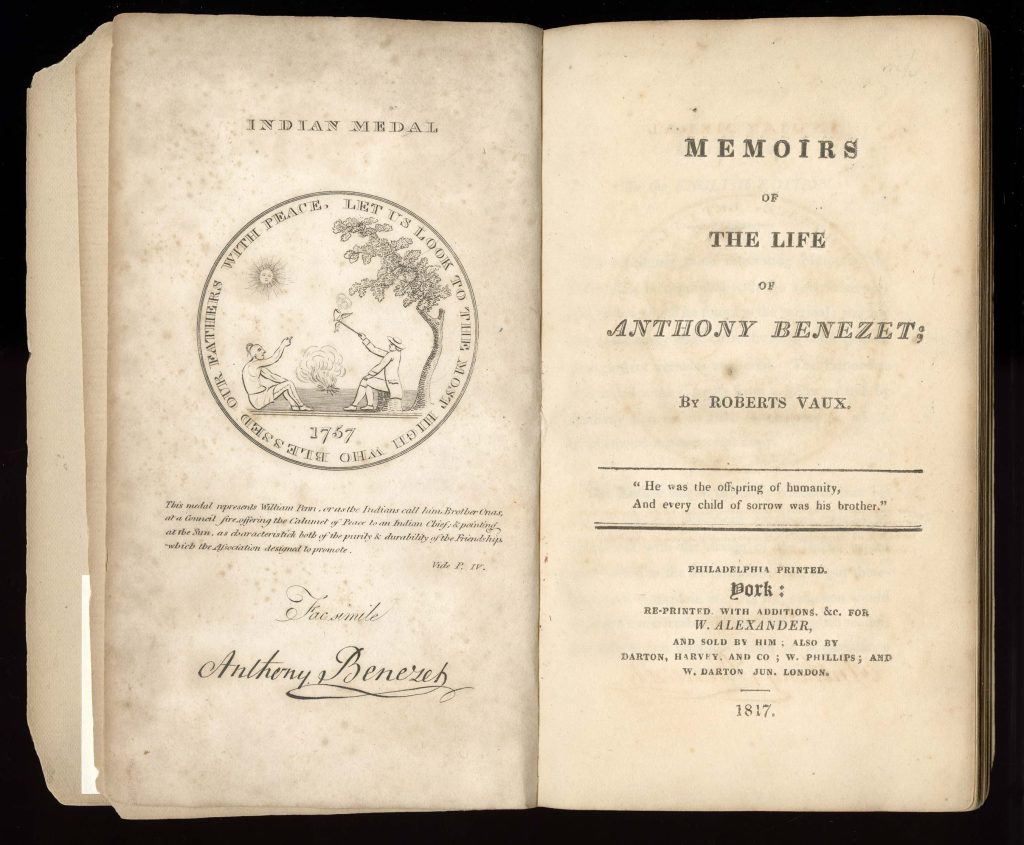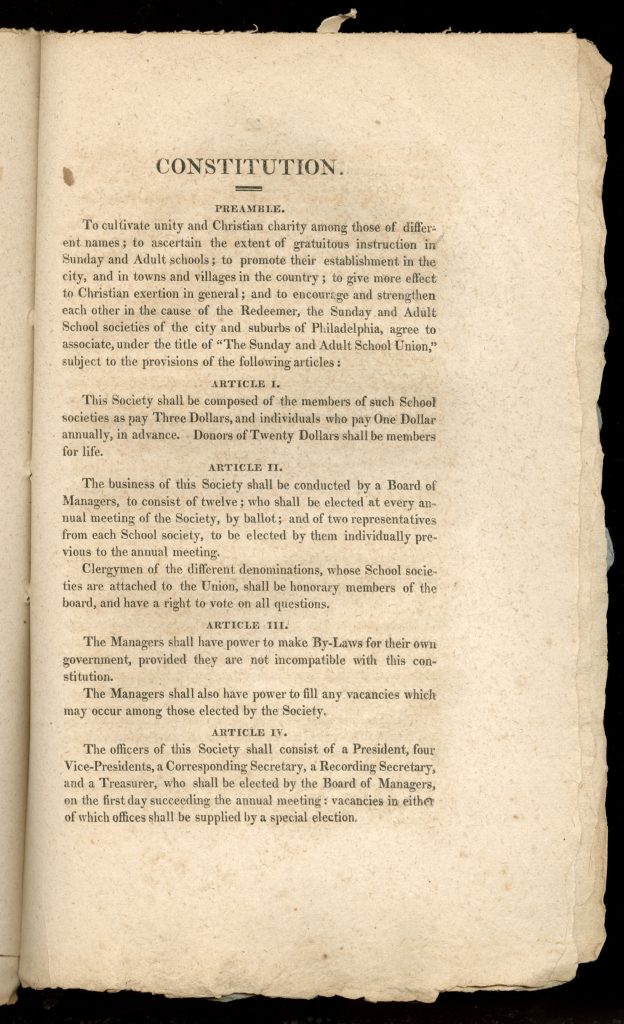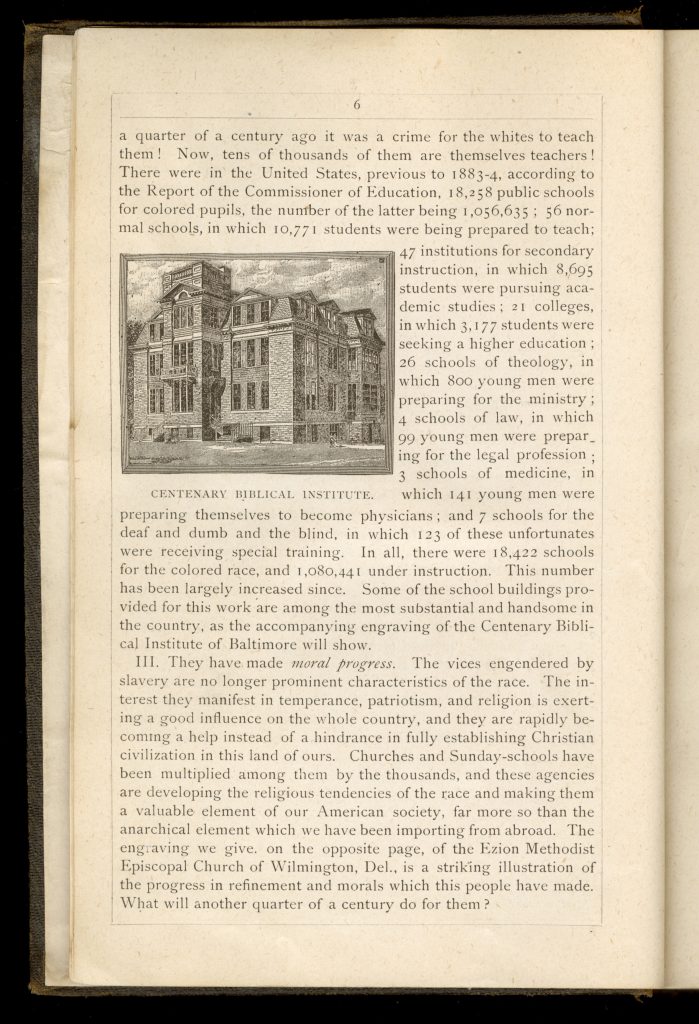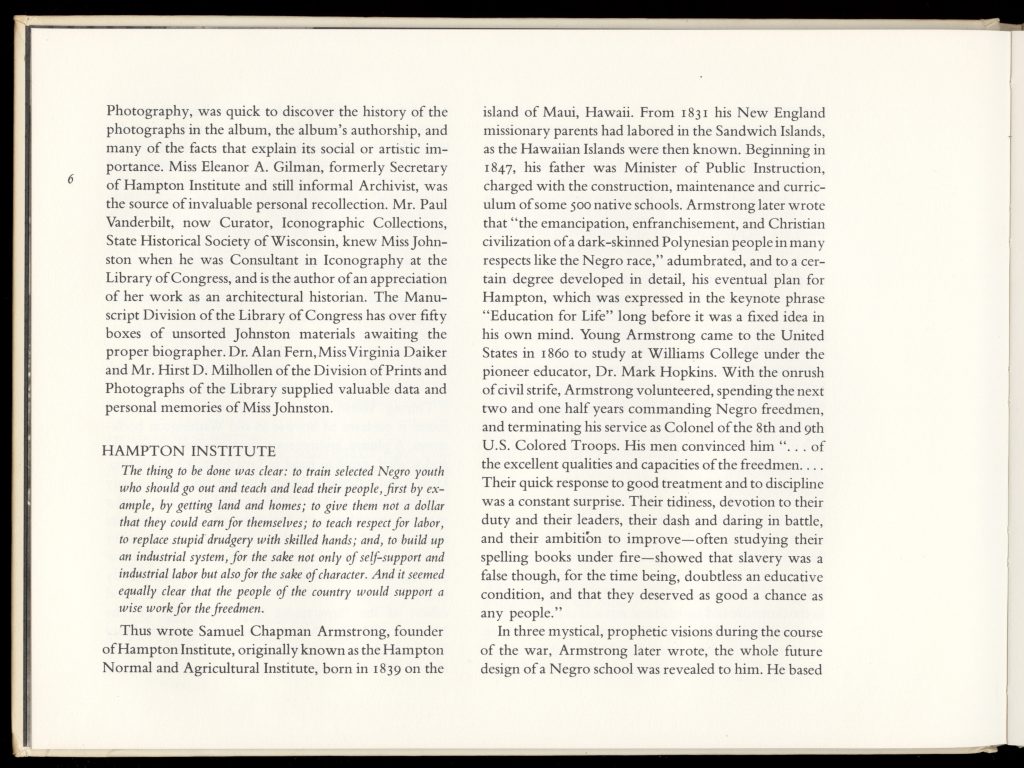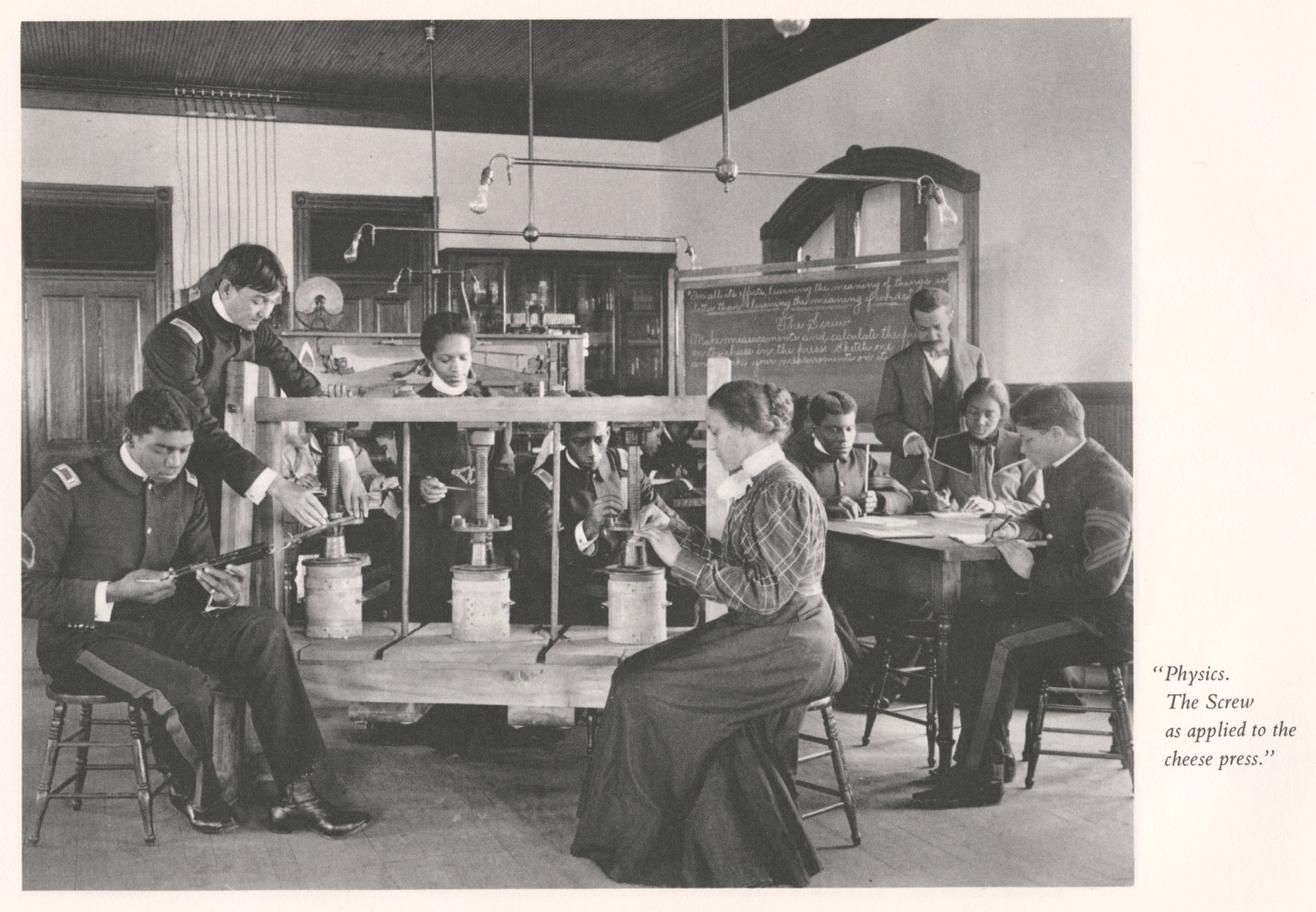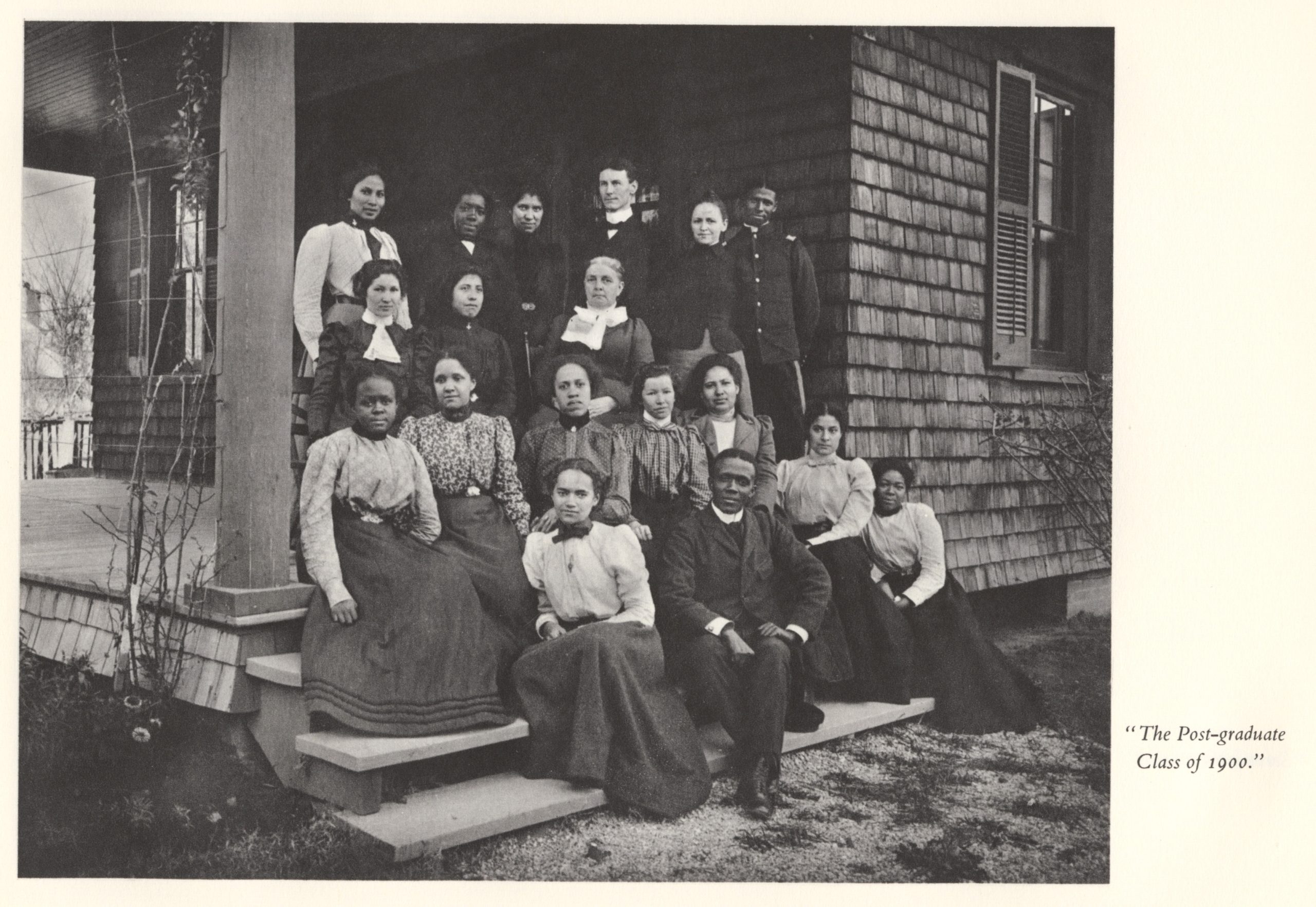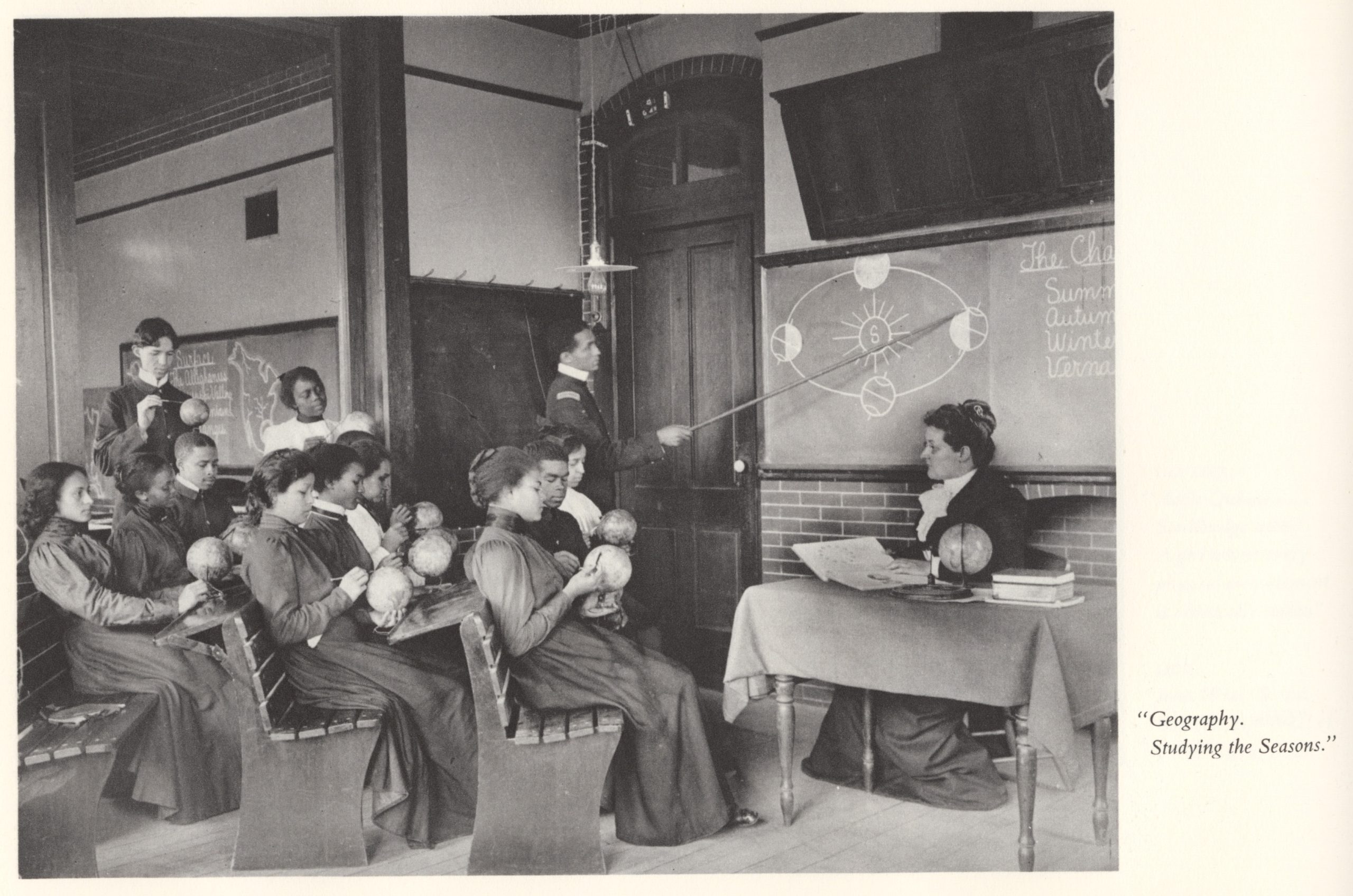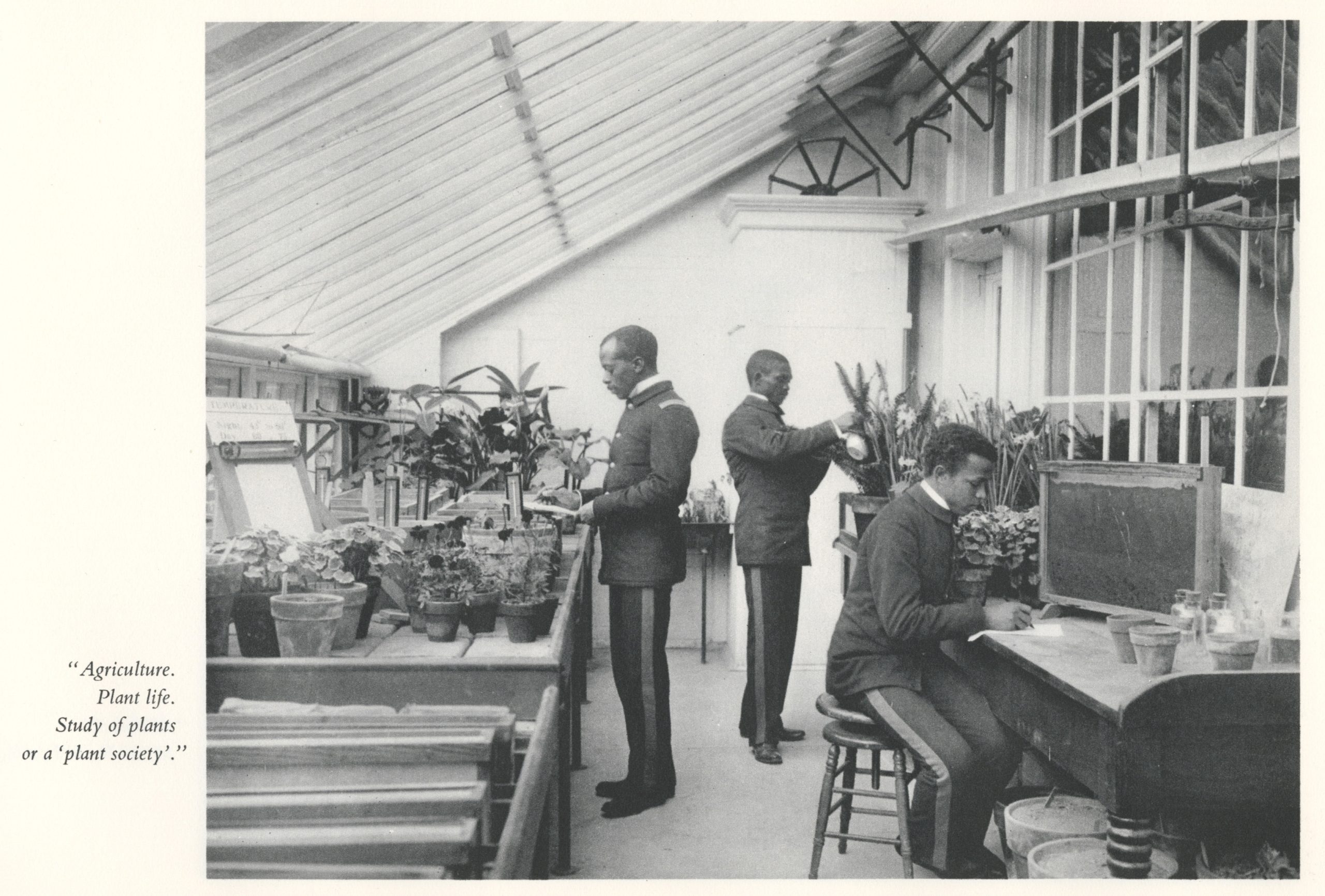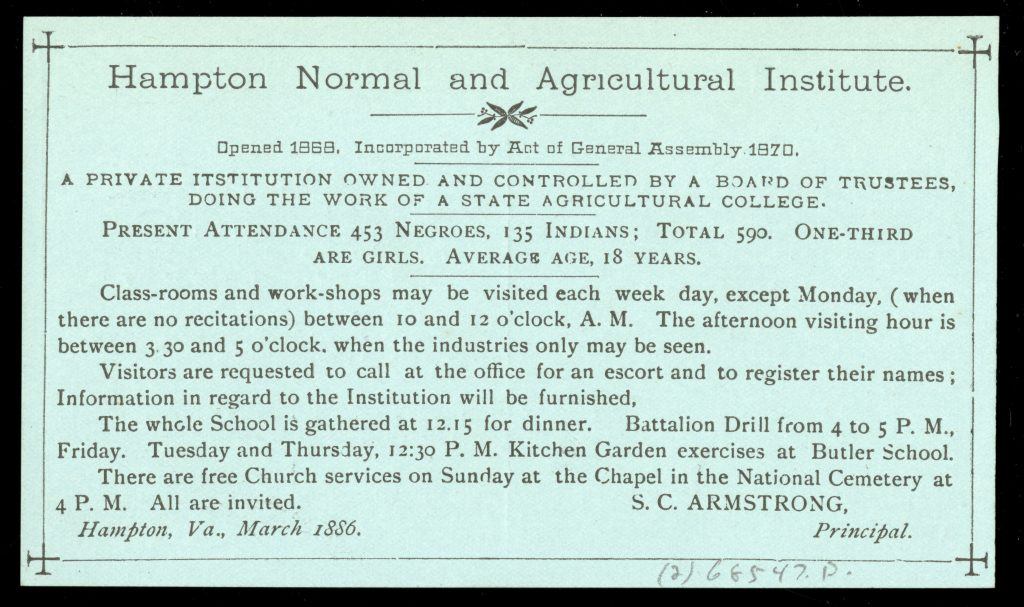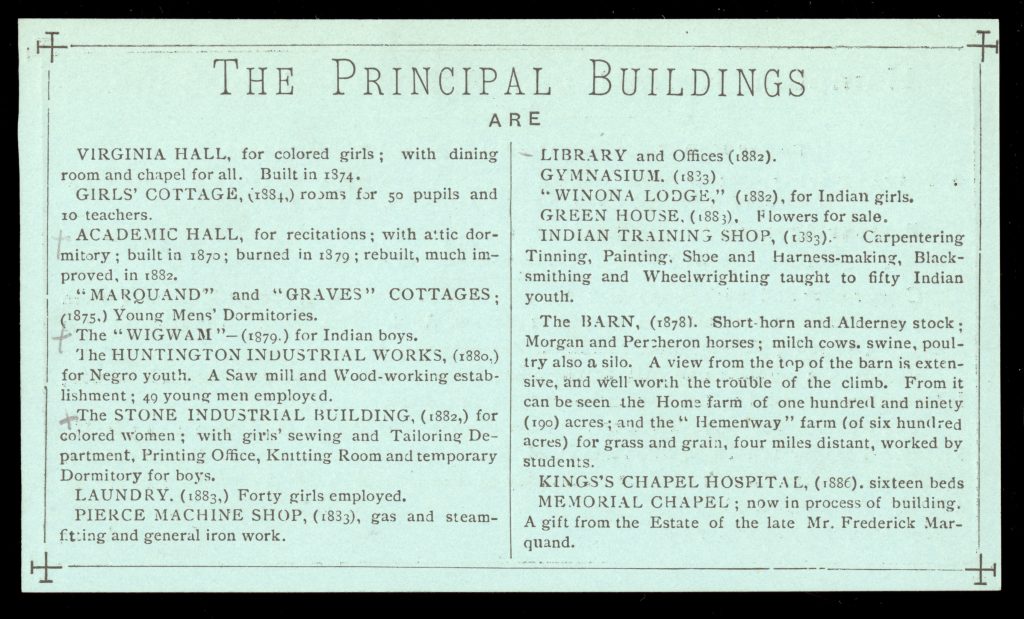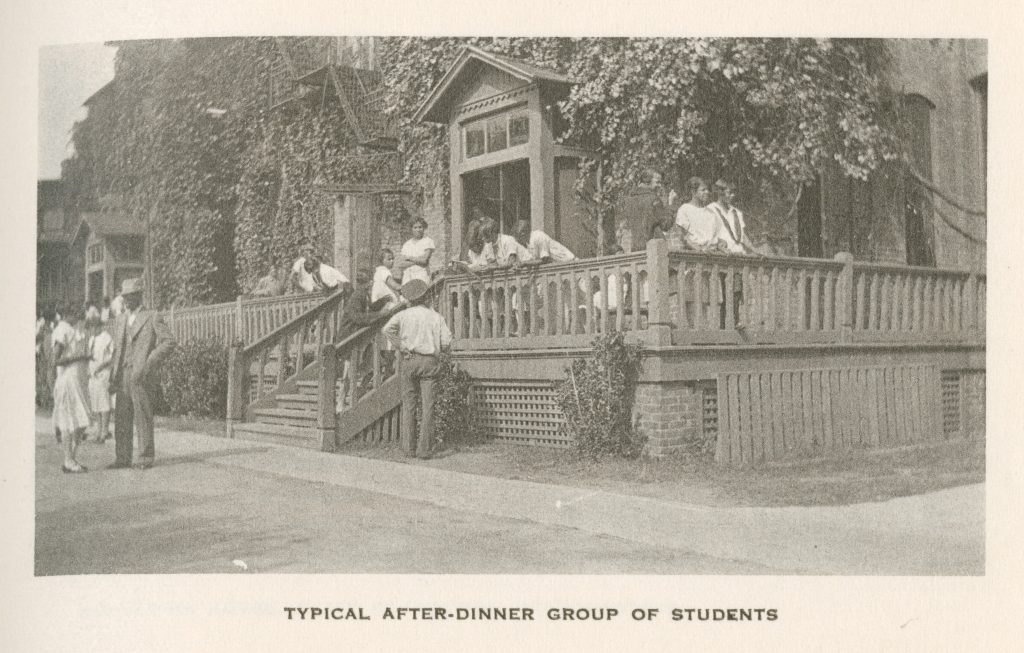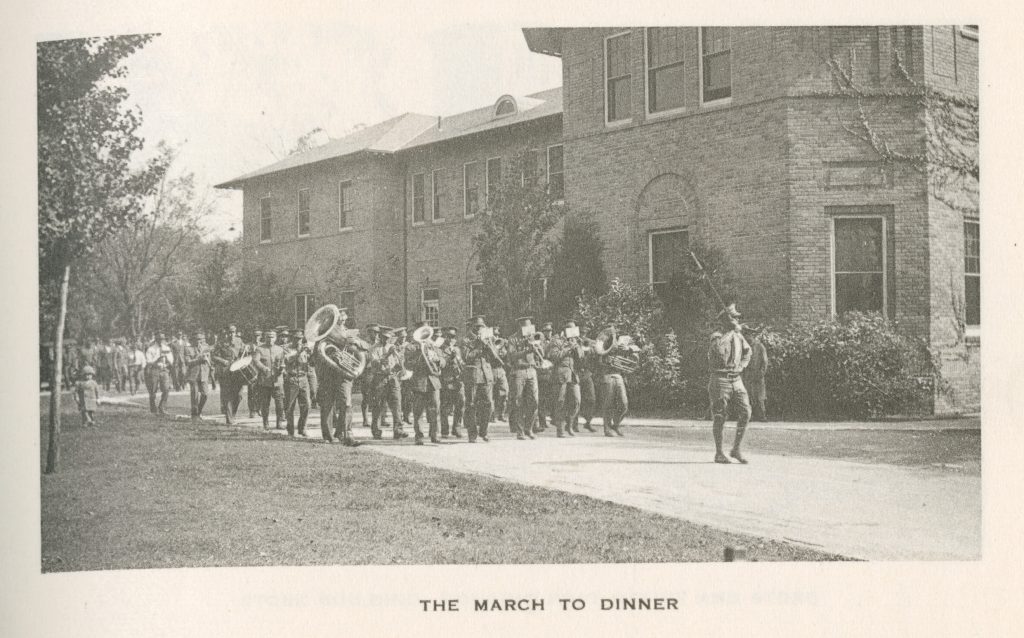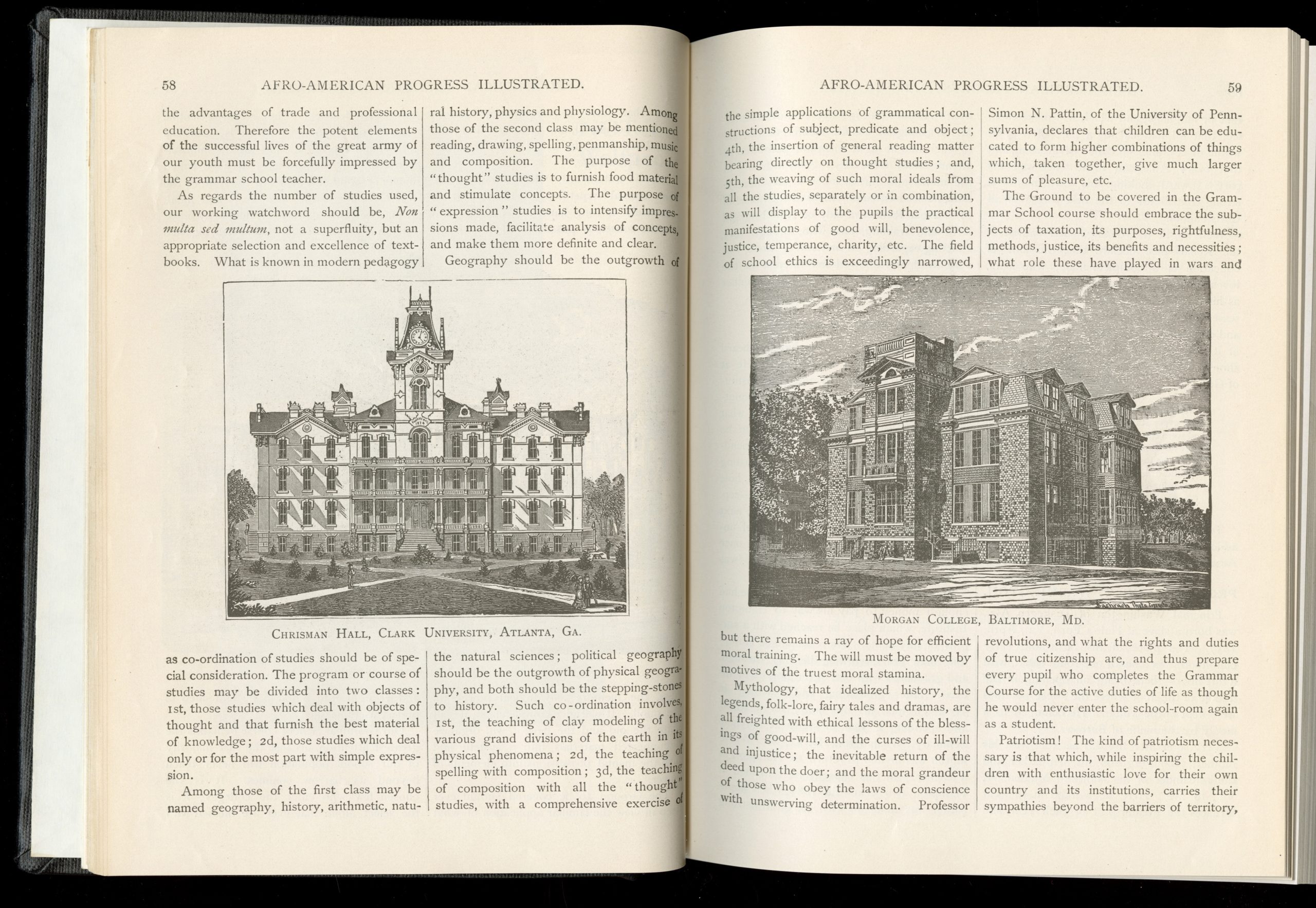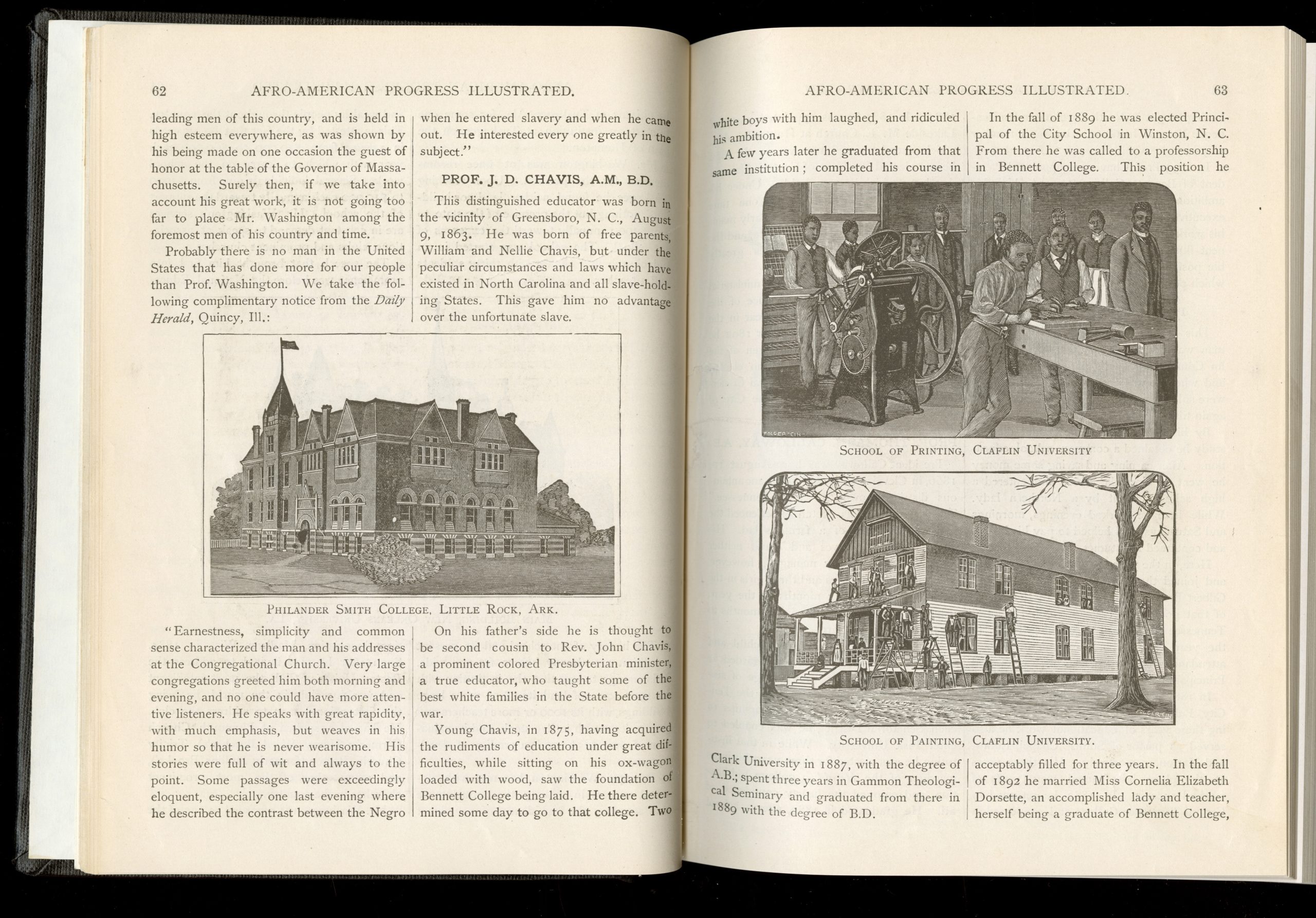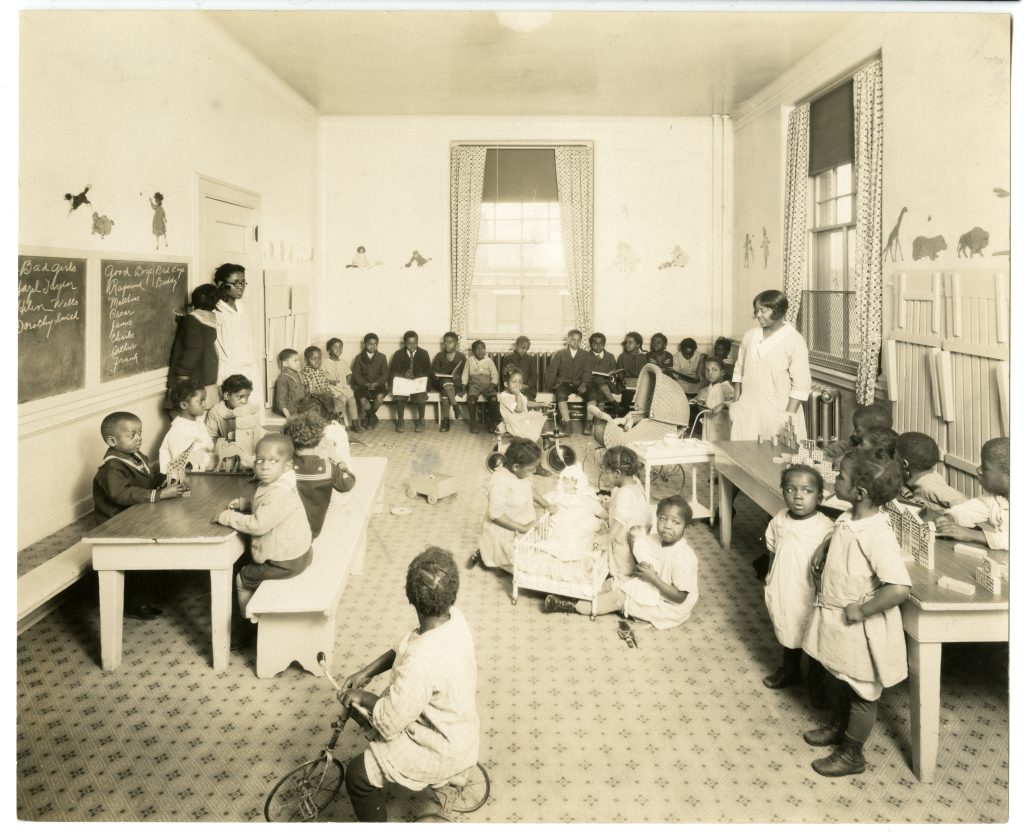How We Learned
During slavery it was largely illegal to educate Black people in many Southern states. After Emancipation, Southern whites wanted Black people to remain ignorant. Following the Civil War, the increased number of Jim Crow laws made segregated schools legal and left Black schools poorly financed and underdeveloped. Despite that, the Black community remained committed to the improvement of Black education and, sometimes with the help from Northern white supporters, created schools that represented them. As a result, Historically Black Colleges and Universities, as we call them today, formed with the intention of providing higher education to the Black community.
Robert Vaux, Memoirs of the life of Anthony Benezet (Philadelphia, 1817). Gift of Gabriella Wagner Monaghan.
LCP 119420.D (Managhan)
Prior to formal educational institutions, African Americans found other means to become educated. One example is educator, abolitionist, and author Anthony Benezet. In 1750, Benezet offered African Americans evening classes out of his home. By 1755, he had created the first Philadelphia secondary school for girls and in 1770 convinced Quakers to establish a free school for African Americans. He received the most enjoyment from teaching students less fortunate and creating an inclusive space for them to learn.
Philadelphia Sunday and Adult School Union, The First Report of the Philadelphia Sunday and Adult School Union: Read at Their Annual Meeting, May 26, 1818 (Philadelphia, 1818). Gift of the Chew Family.
LCP 77441.O
Additional forms of education for African Americans came from Sunday School Unions. The Philadelphia Sunday and Adult School Union was founded in 1817 “to cultivate unity and Christian charity, promote their establishment in town, give more effect to Christian exertion in general, and encourage strengthening each other in the cause of the Savior.” In 1817, the union consisted of 43 schools and enrolled a total of 200 African American children and 155 African American adults.
The Educator: A Monthly Illustrated Magazine Designed to Promote the Cause of Education Among the Colored Population of the United States (Baltimore, 1886).
LCP Per E 15.5
Centenary Biblical Institute, founded in 1867 by the Baltimore Conference of the Methodist Episcopal Church, published The Educator; “a monthly illustrated magazine designed to promote the cause of education among the colored population in the United States.” The institute initially trained young men in ministry and later broadened its mission to educate both men and women as teachers. In 1890, the school was renamed Morgan College after the first Board of Trustees chairman and land donor, Reverend Lyttleton Morgan. By 1940, it had become a state college, and as of 1975, it became Morgan State University, the largest of the four Historically Black Colleges and Universities (HBCUs) in Maryland.
Frances Benjamin Johnston, The Hampton Album: 44 Photographs from an Album of Hampton Institute with an Intro. and a Note on the Photographer by Lincoln Kerstein (New York, 1966).
LCP Is 5 A4191.O
The Hampton Normal and Agricultural Institute, now known as Hampton University, was founded by Samuel Chapman Armstrong, a white activist. Armstrong envisioned a place “to train selected Negro youth who should go out and teach and lead their people, first by example, by getting land and homes; to give them not a dollar that they could earn for themselves; to teach respect for labor, to replace stupid drudgery with skilled hands; and, to build up an industrial system for the sake not only of self-support and industrial labor but also for the sake of character.” The images in The Hampton Album capture that essence by examining hands-on interaction in the classrooms and the diverse subject areas.
Hampton Normal and Agricultural Institute (VA.), Hampton Normal and Agricultural Institute (Hampton, 1886).
LCP 68547.D
Here is a small broadside detailing information about the Hampton Normal and Agricultural Institute, as well as its scheduling requirements. In 1886, there were 453 African Americans and 135 Native Americans in attendance, with one-third being women.
Hampton Institute (Hampton, [1920]).
LCP 68879.D
The Hampton Institute contains photographs of the institution’s history, including student activities, buildings on campus, parades, and the grave of Samuel Chapman Armstrong. At 12:15 P.M., the entire school gathered for dinner at the Virginia Hall dining room. The March to Dinner and Typical After-Dinner Group of Students depict the school’s marching band and a group of students socializing after dinner. Each Sunday, the campus population was invited to free church services at the Chapel in the National Cemetery at 4 P.M. Many also attended services at the Memorial Church.
Henry Davenport Northrop, The College of Life, or Practical Self-educator : a Manual of Self-improvement for the Colored Race Forming an Educational Emancipator and a Guide to Success Giving Examples and Achievements of Successful Men and Women of the Race. ([Denver, 1896]).
LCP 72447.O
By the 1900s, many thought the Black community surpassed all obstacles related to educational advancements. “His mind and heart stirred by the new era that has dawned upon him, his look is upward, and he begins to understand that the noblest manhood and the highest positions of citizenship, wealth and social influence, can be gained only by self-culture and education.” The desire for widespread racial uplift created a demand for higher education.
There are currently 107 Historically Black Colleges and Universities in the United States. Pictured here are a few of the HBCUs in existence today: Fisk University; Clark Atlanta University; Morgan State University; and Philander Smith College. Some of the institutions in the book were misnamed.
Photo Illustrators (Firm), [African American primary school classroom] (1930).
LCP [P.8846.29]
This image is an example of an African American primary school from the 1930s. It depicts two African American women teachers overseeing a class of African American grade school children.
